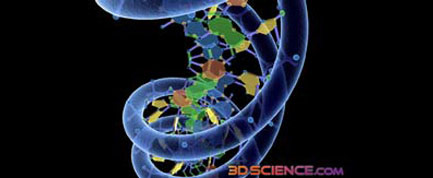
If the history of life on Earth could be rewound and replayed, many of the same innovations would reappear, although at different times and in slightly different forms.
This is the conclusion of Geerat Vermeij, a paleontologist at the University of California, Davis.
Vermeij's views imply that evolution is in some ways predictable and that life on other planets might not be so alien after all.
"Some traits are so advantageous under so many circumstances, or arise so relatively easily by virtue of self-organization, that you're likely to see the same things again and again," Vermeij told LiveScience.
Among the innovations that evolution might find irresistible: photosynthesis, plant seeds, mineralized bones, intelligence and language.
Videotape of life
Vermeij's views contrast with those of the late Harvard biologist Stephen Jay Gould, who famously argued that if the "videotape of life" could be rewound and played again, vastly different life forms would evolve. Gould believed that chance, or "contingency," plays a big role in the history of life. The extinction of dinosaurs and the rise of mammals on Earth, for example, resulted from a chance asteroid impact 65 million years ago.
Sign up for the Live Science daily newsletter now
Get the world’s most fascinating discoveries delivered straight to your inbox.
A model of double helix structure of DNA with its base pairs that link in myriad ways to create the various blueprints for life as we know it. Image courtesy 3DScience.com.
In a study published last month in the journal for the Proceedings of the National Academy of Sciences, Vermeij reviewed 23 evolutionary innovations traditionally considered to be unique in the history of life. These included things like genetic code, sex, bird feathers, turtle shells and human language.
Vermeij also reviewed another 55 innovations that evolved more than once in the history of life among unrelated species. Scientists call such instances of repeat innovations "convergent evolution." Some of the cases of convergent evolution that Vermeij examined were multicellularity, eyes, ears, and venom injection.
Vermeij concluded that most of the unique innovations—with the exception of human language—are ancient, more than half a billion years old. Many of the repeat innovations, in contrast, appeared much later in the history of life.
A false historical perspective
One possible explanation for these results is that something limited the amount of convergent evolution that could occur during the early stages of life. If this were the case, then traits developing during that time would truly be unique and might not appear again if conditions were even slightly different.
However, Vermeij thinks this option is unlikely, because it would mean that "the world has changed in some peculiar way" since ancient times.
The more probable explanation, he thinks, is that many of life's "unique" developments might just appear so because other species that also evolved those traits have died out and their remains were not fossilized.
Another possibility is that many innovations considered unique might just be the result of intense natural selection. For example, when the genetic code first appeared among primitive organisms, it offered such a competitive advantage that if other variations of the genetic code did evolve later, they would not have been able to spread.
Not so alien after all
Of course, life on Earth can't be played out again, but scientists might one day find life on Mars, or on moons with liquid water like Europa, or on some distant Earth-like planet.
If Gould was right, then life on these other worlds could be so alien that humans might not even recognize it if they did come across it. But if Vermeij is correct, then these alien life forms might be familiar to us because their developments were shaped by physical and evolutionary laws that apply everywhere in the universe.
"Alien life forms will look different but they will have many of the same basic traits and performance levels and abilities," Vermeij said.










